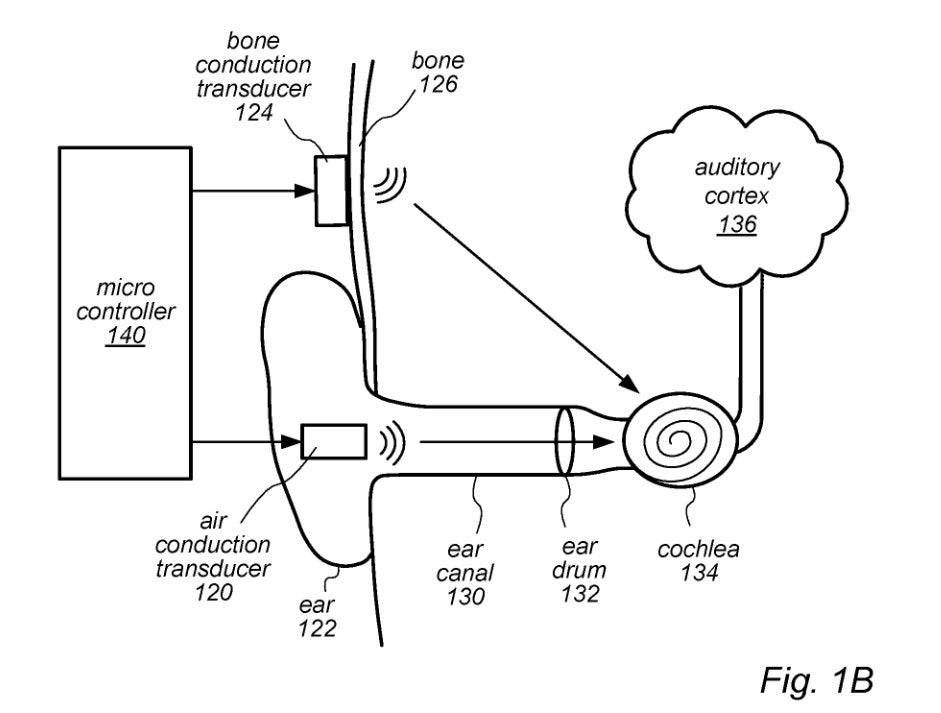New Apple patent could result in the use of bone conduction to deliver audio on the next AirPods

Apple's Bluetooth Wireless AirPods remains one of the company's hottest devices. And we wouldn't be surprised to see several fabulous deals for the AirPods Pro as we get closer to the upcoming holiday shopping season. Walking down the street you're likely to see a number of people sporting the in-ear wearable. There is anecdotal evidence that the AirPods are replacing the Apple Watch as iPhone users' most desired accessory.
Apple patents method that would allow bone conduction to be used on a future version of the AirPods
The "Pro" version of the AirPods unveiled in March took Apple's earbuds to another level with its Active Noise Cancellation and the Transparency mode that allows ambient noises to be heard through the earbuds. Water and sweat resistant, the AirPods Pro have three different sizes of ear tips allowing for an improved fit. If Apple follows through with a patent it has been granted by the U.S. Patent and Trademark Office (via AppleInsider), a future variant of the AirPods could include bone conduction audio.

Illustration from Apple's new patent
Bone conduction transmits sounds by using vibrations sent through a person's jaw and head. The vibrations skip the eardrum and are picked up by the inner ear where they are turned into sounds. This technology is a great replacement for those who are hard of hearing or where a medical reason prevents a person from donning earphones or headphones. It also works underwater where vibrations aren't stopped by the lack of air.
In the patent, Apple explains bone conduction by saying, "Bone-conduction headphones allow a user to hear sounds through vibration of the bones in the user's cranium. Bone-conduction headphones are different from air-conduction headphones, which convert sound signals to air vibrations that are then detected by the human ear. With bone conduction, sound signals are transmitted directly to the user's body, via direct contact with the user. Different types of bone-conduction headphones can operate by contacting different portions of the user's head and transmitting sound through different portions of the user's cranium. For example, a set of bone-conduction headphones may be designed to vibrate the temporal bones on the sides of the user's face, either in front of or behind the user's ear. Other bone-conduction headphones may be designed to transmit sound through other parts of the cranium, such as the sphenoid bone, the jaw bone, or the nasal bone."

Another illustration from the patent
But there are some issues with bone conduction. One, the latter is only effective at 4,000 Hz and less. Above that level, the quality of the sound deteriorates. Human hearing covers 20 Hz to 20,000 Hz so bone conduction will only work with a small percentage of the human hearing range. In addition, contact with the head is required for this technology to work. This causes a tactile tickling sensation that can be annoying.
The patent, titled "Multipath audio stimulation using audio compressors" envisions separating audio signals into a high-frequency component, a mid-frequency component, and a low-frequency component. The mid and low-frequency signals are processed using a compressor to reduce the dynamic range of the audio and then combined. This component, made up of the combined and compressed mid-and-low-frequency signals, are transmitted via bone conduction. The high-frequency signals are delivered through the air. This allows the audio delivered by bone conduction to hit the sweet spot in terms of frequencies.
The patent was originally filed in May 2018 and has been given the number 10,728,649. Apple receives a large number of patents each year (patent attorneys need to eat too) but that doesn't mean that every patent the company receives will be used on an upcoming device. According to super analyst Ming-Chi Kuo, the next version of the AirPods is expected to be unveiled before next year's WWDC (which could be streamed virtually again) in June. The AirPods 3 will have the same design as the AirPods Pro according to Kuo and might use bone conduction to deliver audio.
Follow us on Google News













Things that are NOT allowed:
To help keep our community safe and free from spam, we apply temporary limits to newly created accounts: